The Govan Stones – Treasures From The Viking Era In Britain
A. Sutherland - AncientPages.com - An extraordinary and priceless collection of Viking-age monuments, located at Govan Old Parish Church, Glasgow, Scotland, represents one of the best collections of early medieval sculpture anywhere in the British Isles.
Govan stones. Image credit: Deadmanjones - CC BY-SA 3.0
Carved in the 9th – 11th centuries, the Govan Stones probably commemorate the power of those who ruled the native Briton Kingdom of Strathclyde, the lost kingdom of the northern Britons.
The total number of stones was forty-five, but many were lost. They all had a large cross carved on the front, surrounded by Celtic interlace patterns. Interestingly, the missing ones were the same type: the horizontal cross-slab, designed to be placed on top of a grave.
By the end of the nineteenth century, many ancient carvings had worn away after a thousand years of exposure to the elements,
The Govan medieval stones are covered with classic Viking patterns, elaborate carvings of crosses, and cross shafts. Still, they are not found in Scandinavia. Also known as “Hogback monuments”, these house-shaped Viking tombstones (dated to the 10th – 12th century) have been found in northern England and even as far north as the River Tyne.
 A side of the Govan Sarcophagus, with animal and interlace carvings. Image credit: Viking870 - CC BY-SA 4.0
A side of the Govan Sarcophagus, with animal and interlace carvings. Image credit: Viking870 - CC BY-SA 4.0
However, they are considered a remarkable and odd invention associated with the Viking settlers, who built the tombs of the dead in Norwegian style. Did the settlers intend to design the coffins to represent Viking longhouses for the deceased to continue living in the afterlife?
The Govan Sarcophagus with warrior figures is particularly interesting, the only one from solid stone from pre-Norman, northern Britain. It was discovered in the church graveyard in December 1855 and brought into the church in 1908.
The sarcophagus is believed to commemorate St. Constantine, the son of Pictish king Kenneth MacAlpin, King of Dál Riada (841–850), King of the Picts (843–858), and the first King of Alba (843–858).
Side of the Viking-Age Govan Sarcophagus thought to depict a royal saint killed by Vikings in the 870s. Image credit: Viking870 - CC BY-SA 4.0
The coffin is carved from a block of sandstone, with the sides covered with panels depicting animals and a horseman alongside ribbon motifs. Perhaps, it was intended to hold the mortal remains of the founder of the medieval Church of St Constantine, built on the site where Govan Old Parish Church stands today.
There are no religious motifs on the stones depicting warriors and animals. Otherwise, it could suggest that these were gravestones for the local clergy when Govan was a center of royal power in the kingdom of Strathclyde. Still, there is a distinct possibility that the stones commemorated the warrior aristocracy.
The names of the deceased are unknown, for no early inscriptions are visible on any of the Govan stones.
Written by – A. Sutherland - AncientPages.com Senior Staff Writer
Updated on February 26, 2023
Copyright © AncientPages.com All rights reserved. This material may not be published, broadcast, rewritten or redistributed in whole or part without the express written permission of AncientPages.com
Expand for references
More From Ancient Pages
-
 Orthodox Church In Black Sea Region Looted By Treasure Hunters
Archaeology | Feb 24, 2021
Orthodox Church In Black Sea Region Looted By Treasure Hunters
Archaeology | Feb 24, 2021 -
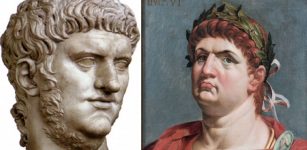 Who Was Pseudo-Nero?
Ancient History Facts | Apr 25, 2016
Who Was Pseudo-Nero?
Ancient History Facts | Apr 25, 2016 -
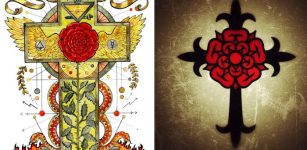 Rose Cross – Powerful Symbol That Existed Long Before Christianity
Ancient Symbols | Dec 3, 2017
Rose Cross – Powerful Symbol That Existed Long Before Christianity
Ancient Symbols | Dec 3, 2017 -
 On This Day In History: Captain James Cook Spotted The East Coast Of Australia – On Apr 19, 1770
News | Apr 19, 2017
On This Day In History: Captain James Cook Spotted The East Coast Of Australia – On Apr 19, 1770
News | Apr 19, 2017 -
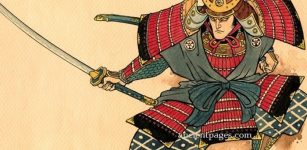 Everyday Life Of A Samurai: Armor, Appearance And Belongingness
Featured Stories | Nov 6, 2018
Everyday Life Of A Samurai: Armor, Appearance And Belongingness
Featured Stories | Nov 6, 2018 -
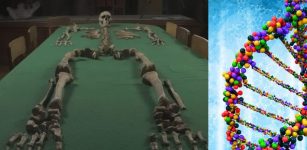 DNA Reveals Stone Age People Avoided Inbreeding
DNA | Mar 9, 2024
DNA Reveals Stone Age People Avoided Inbreeding
DNA | Mar 9, 2024 -
 1,500-Year-Old Joint Burial Offers A Look Into Attitudes Toward Love And The Afterlife
Archaeology | Sep 14, 2021
1,500-Year-Old Joint Burial Offers A Look Into Attitudes Toward Love And The Afterlife
Archaeology | Sep 14, 2021 -
 Hollow Bones That Let Dinosaurs Become Giants Evolved At Least Three Times Independently
News | Apr 11, 2023
Hollow Bones That Let Dinosaurs Become Giants Evolved At Least Three Times Independently
News | Apr 11, 2023 -
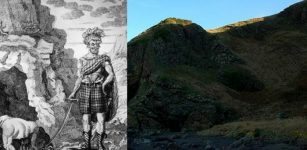 Scientists Unravel The Mystery Of The Alexander Sawney Bean Legend & Cave-Dwelling Cannibals In Scotland
Myths & Legends | Sep 24, 2015
Scientists Unravel The Mystery Of The Alexander Sawney Bean Legend & Cave-Dwelling Cannibals In Scotland
Myths & Legends | Sep 24, 2015 -
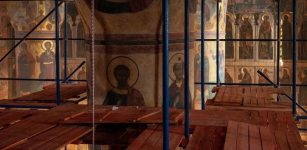 Never-Before-Seen Ancient Frescoes Discovered Inside The Dormition Cathedral
Archaeology | Feb 28, 2020
Never-Before-Seen Ancient Frescoes Discovered Inside The Dormition Cathedral
Archaeology | Feb 28, 2020 -
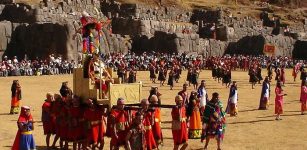 What Was Inti Raymi And Why Was It Celebrated By Inca?
Ancient History Facts | Dec 16, 2017
What Was Inti Raymi And Why Was It Celebrated By Inca?
Ancient History Facts | Dec 16, 2017 -
 Zep Tepi – When Gods Established Their Kingdom On Earth In Egypt
Featured Stories | May 23, 2021
Zep Tepi – When Gods Established Their Kingdom On Earth In Egypt
Featured Stories | May 23, 2021 -
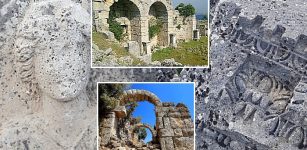 Excavations In Ancient City Of Cremna – One Of The Five Colonial Cities In Pisidia
Archaeology | Sep 26, 2023
Excavations In Ancient City Of Cremna – One Of The Five Colonial Cities In Pisidia
Archaeology | Sep 26, 2023 -
 Xochipilli: Aztec God Of Love, Music, Song And Ecstatic Mushroom Trance
Aztec Mythology | May 19, 2018
Xochipilli: Aztec God Of Love, Music, Song And Ecstatic Mushroom Trance
Aztec Mythology | May 19, 2018 -
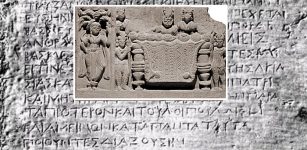 Robots Guarded Buddha’s Relics In Ancient India – Legend Tells
Featured Stories | Jun 28, 2019
Robots Guarded Buddha’s Relics In Ancient India – Legend Tells
Featured Stories | Jun 28, 2019 -
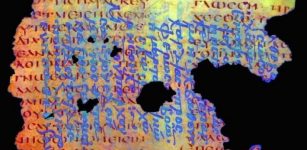 Never-Before-Seen Ancient Texts Hidden In Saint Catherine’s Monastery In Sinai Are Now Available Online
Archaeology | Dec 21, 2017
Never-Before-Seen Ancient Texts Hidden In Saint Catherine’s Monastery In Sinai Are Now Available Online
Archaeology | Dec 21, 2017 -
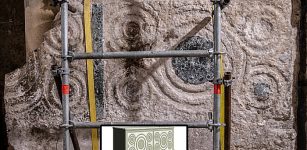 Graffiti Reveals Crusaders’ Beautiful Altar In The Church Of The Holy Sepulchre
Archaeology | Jul 24, 2024
Graffiti Reveals Crusaders’ Beautiful Altar In The Church Of The Holy Sepulchre
Archaeology | Jul 24, 2024 -
 Oklahoma’s Mysterious Hollow Hill – Hidden Artifact Reveals A Frightening Story – Part 1
Ancient Mysteries | Jul 8, 2020
Oklahoma’s Mysterious Hollow Hill – Hidden Artifact Reveals A Frightening Story – Part 1
Ancient Mysteries | Jul 8, 2020 -
 Ancient Entrance Gate Found In Biblical City Of Bethsaida (Zer) Where Jesus Performed His Deeds Of Power
Archaeology | Jul 11, 2018
Ancient Entrance Gate Found In Biblical City Of Bethsaida (Zer) Where Jesus Performed His Deeds Of Power
Archaeology | Jul 11, 2018 -
 Never-Before-Seen Face Of A Tattooed Tashtyk Man Hidden Behind A Gypsum Death Mask Revealed
Archaeology | Jul 17, 2020
Never-Before-Seen Face Of A Tattooed Tashtyk Man Hidden Behind A Gypsum Death Mask Revealed
Archaeology | Jul 17, 2020


